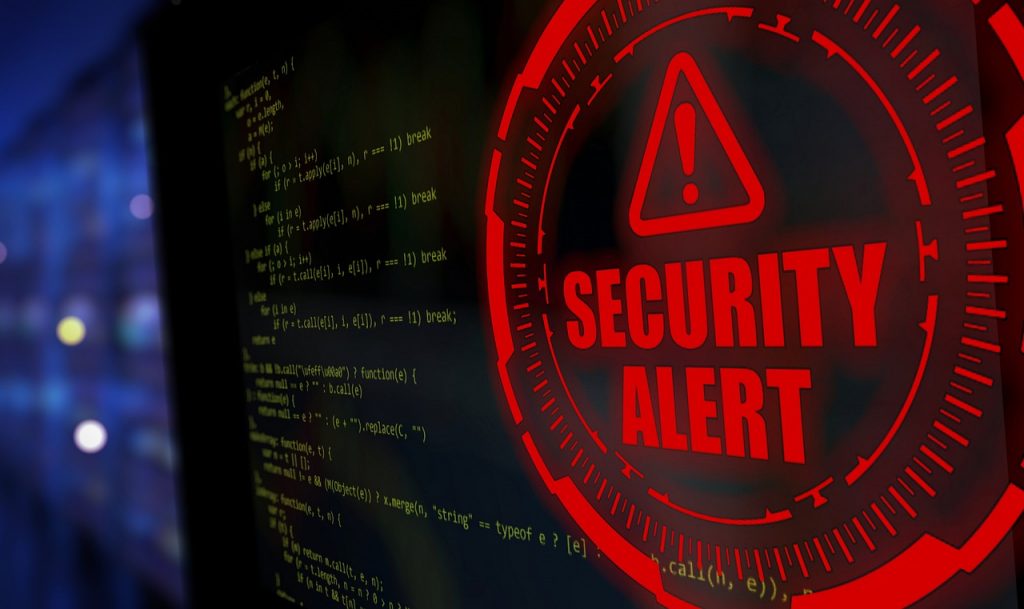In an era dominated by digital innovation, software security has become paramount. The increasing sophistication and frequency of cyber threats pose significant risks to organizations and individuals alike. As our reliance on software systems grows, so does the need for robust security measures to protect sensitive data, maintain system integrity, and ensure business continuity. This comprehensive guide explores the multifaceted approach required to fortify software against the ever-evolving landscape of cyber threats.
Understanding the Modern Cyber Threat Landscape
The digital world is rife with diverse and complex cyber threats that continuously evolve to exploit new vulnerabilities. Understanding this landscape is crucial for developing effective security strategies.
Common Cyber Threats
Today’s cybersecurity professionals face a wide array of threats, each with unique characteristics and potential impacts:
- Ransomware: Malicious software that encrypts data, demanding payment for decryption
- Phishing: Deceptive attempts to obtain sensitive information through disguised communications
- DDoS (Distributed Denial of Service): Overwhelming a system with traffic to render it inaccessible
- SQL Injection: Exploiting vulnerabilities to insert malicious SQL statements into application queries
- Zero-Day Exploits: Attacks that target previously unknown vulnerabilities before patches are available
- Man-in-the-Middle (MitM) Attacks: Intercepting and potentially altering communications between two parties
- Cross-Site Scripting (XSS): Injecting malicious scripts into otherwise benign websites
Each of these threats requires specific countermeasures and vigilant monitoring to mitigate risks effectively.
The Evolving Nature of Cyber Attacks
Cyber attacks are becoming increasingly sophisticated, leveraging advanced technologies and methodologies:
- AI-Powered Attacks: Utilizing artificial intelligence to automate and enhance attack vectors
- IoT Vulnerabilities: Exploiting the growing network of connected devices
- Supply Chain Attacks: Targeting less-secure elements in the software supply chain
- Social Engineering: Manipulating human psychology to bypass technical security measures
- Cryptojacking: Unauthorized use of computing resources for cryptocurrency mining
This evolution necessitates a dynamic approach to software security, one that anticipates future threats while addressing current vulnerabilities.
Implementing Secure Software Development Practices

Secure software development is the foundation of robust cybersecurity. By integrating security considerations throughout the development lifecycle, organizations can significantly reduce vulnerabilities.
Secure Coding Standards
Adhering to established secure coding standards is crucial for minimizing vulnerabilities:
| Standard | Focus Area | Key Benefits |
|---|---|---|
| OWASP Top 10 | Web application security | Addresses most critical web app risks |
| SANS 25 | Software errors | Covers common programming errors |
| CWE/SANS Top 25 | Most dangerous software weaknesses | Prioritizes critical vulnerabilities |
| CERT Secure Coding | Language-specific guidelines | Tailored to specific programming languages |
Implementing these standards involves:
- Regular code reviews and static analysis
- Automated security testing integration in CI/CD pipelines
- Peer programming for complex security-critical sections
- Continuous education on secure coding practices
Regular Security Audits and Penetration Testing
Security audits and penetration testing are vital for identifying vulnerabilities before they can be exploited:
- Vulnerability Scanning: Automated tools to identify known security issues
- Manual Code Review: Expert analysis to catch logic flaws and complex vulnerabilities
- Penetration Testing: Simulated attacks to test system defenses
- Red Team Exercises: Extended, multi-vector simulated attacks
- Compliance Audits: Ensuring adherence to industry standards and regulations
Regular execution of these processes helps maintain a robust security posture and identifies areas for improvement.
Importance of Software Updates and Patch Management
Timely software updates and effective patch management are critical components of a comprehensive security strategy.
Automated Update Mechanisms
Implementing automated update mechanisms ensures that software remains current and protected against known vulnerabilities:
| Tool | Key Features | Best For |
|---|---|---|
| Windows Server Update Services (WSUS) | Centralized updates for Windows environments | Enterprise Windows networks |
| Red Hat Satellite | Linux system management and patching | Red Hat Enterprise environments |
| Puppet | Cross-platform configuration management | Diverse IT infrastructures |
| Ansible | Agentless automation and patching | Multi-platform environments |
| Chef | Infrastructure as code for patch management | DevOps-oriented organizations |
These tools streamline the update process, reducing the window of vulnerability and ensuring consistent security across systems.
Risks of Delayed Patching
Delaying software updates and patches can have severe consequences:
- Increased Vulnerability: Unpatched systems remain open to known exploits
- Compliance Issues: Failing to maintain current software may violate regulatory requirements
- Performance Degradation: Outdated software may not benefit from performance improvements
- Compatibility Problems: Older versions may become incompatible with newer systems or security measures
- Increased Attack Surface: Accumulated vulnerabilities provide more entry points for attackers
Prioritizing timely patching is essential for maintaining a strong security posture and minimizing organizational risk.
Employing Encryption and Data Protection Techniques

Encryption and robust data protection are fundamental to safeguarding sensitive information from unauthorized access and breaches.
Data Encryption Standards
Various encryption standards offer different levels of security and performance:
| Encryption Standard | Key Length | Use Case | Strength |
|---|---|---|---|
| AES (Advanced Encryption Standard) | 128, 192, 256 bits | General-purpose encryption | Very High |
| RSA | 2048, 4096 bits | Public key cryptography | High |
| ECC (Elliptic Curve Cryptography) | 256, 384 bits | Mobile and IoT devices | High |
| Blowfish | 32-448 bits | Fast encryption for non-critical data | Moderate |
| Twofish | 128, 192, 256 bits | Successor to Blowfish | High |
Selecting the appropriate encryption standard depends on the specific security requirements, performance needs, and regulatory compliance considerations.
Secure Data Storage and Transmission
Best practices for secure data storage and transmission include:
- Implementing End-to-End Encryption: Ensuring data is encrypted throughout its lifecycle
- Using SSL/TLS for Data in Transit: Securing network communications with robust protocols
- Employing Hardware Security Modules (HSMs): Safeguarding cryptographic keys
- Implementing Database Encryption: Protecting sensitive data at rest
- Regular Key Rotation: Changing encryption keys periodically to minimize risk
- Secure Key Management: Implementing robust processes for key generation, storage, and destruction
- Data Masking: Obfuscating sensitive data in non-production environments
These practices form a comprehensive approach to data protection, addressing vulnerabilities at various stages of data handling.
Training and Awareness for Developers and Users
Human factors play a crucial role in software security. Comprehensive training programs for both developers and end-users are essential for maintaining a strong security posture.
Developer Training Programs
Continuous security training for developers is vital for staying ahead of evolving threats:
- Secure Coding Bootcamps: Intensive training on secure programming practices
- Online Learning Platforms: Courses on platforms like Coursera, edX, or Pluralsight
- Certification Programs: GIAC Secure Software Programmer, EC-Council Certified Secure Programmer
- Hands-On Labs: Practical exercises simulating real-world security scenarios
- Code Review Workshops: Collaborative sessions to identify and fix security issues
- Security Conferences: Attendance at events like Black Hat, DEF CON, or OWASP AppSec
Regular participation in these programs ensures that developers remain current with the latest security best practices and threat landscapes.
User Awareness Initiatives
Educating end-users is crucial for preventing social engineering attacks and promoting safe computing practices:
Key topics for user training:
- Phishing Awareness: Identifying and reporting suspicious emails or messages
- Password Hygiene: Creating and managing strong, unique passwords
- Social Engineering Tactics: Recognizing manipulation attempts
- Safe Browsing Habits: Identifying secure websites and avoiding risky online behavior
- Data Handling Procedures: Proper management of sensitive information
- Incident Reporting: Procedures for reporting suspected security incidents
- Mobile Device Security: Securing personal devices used for work purposes
Implementing regular training sessions, simulated phishing exercises, and ongoing security communications helps maintain a security-conscious culture throughout the organization.
Conclusion
Ensuring software security in the age of cyber threats requires a multifaceted, proactive approach. By implementing secure development practices, maintaining rigorous update and patch management processes, employing robust encryption and data protection techniques, and fostering a culture of security awareness, organizations can significantly enhance their resilience against cyber attacks.
The landscape of cyber threats continues to evolve, demanding constant vigilance and adaptation. Prioritizing security at every stage of the software lifecycle, from development to deployment and ongoing maintenance, is no longer optional—it’s a critical necessity for protecting valuable assets, maintaining trust, and ensuring business continuity.
By embracing comprehensive security measures and fostering a security-first mindset across all levels of an organization, businesses can not only defend against current threats but also build a foundation capable of adapting to future challenges in the ever-changing digital landscape.

